For more than five years, divers and scientists along the U.S. West Coast have watched a disaster play out before their eyes. First came an almost overnight disappearance of sea stars, especially sunflower sea stars, which then allowed a population explosion of the purple urchins that sea stars eat. The urchin hordes mowed down entire forests of bull kelp.
“When I started diving out of Point Lobos [California] around 2013, it was a healthy, lush kelp forest,” said Tristin McHugh, who volunteered with a monitoring group at the time. “Week one, everything looked beautiful. Week two, we saw sea stars melting into the seafloor. It was one of the most insane things I’ve ever seen.”
Perfect Storm of Stressors
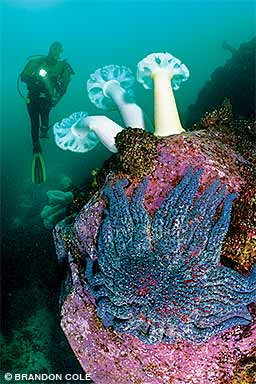
The sunflower sea stars fell victim to a wasting disease, which wiped out roughly 90 percent of the global population in 2013. Seven years later, scientists see no signs of recovery. The West Coast experienced intense ocean warming from 2014 to 2017, and by 2015 divers began seeing urchin barrens — vast swaths covered in piles of spiny creatures and little else.
“There are multiple stressors involved, and it’s very hard to tease apart which stressor was playing what role in the kelp forest collapse,” said Laura Rogers-Bennett, a scientist with the California Department of Fish and Wildlife and the Bodega Marine Laboratory at the University of California, Davis. “We lost about 95 percent of the bull kelp forest, and this is not just a natural cycle. We have had poor kelp years in the past, but good years frequently followed. We’ve never seen five years in a row of no bull kelp.”
Bull kelp completes its life cycle within a single year, forming spores in the fall that germinate into male and female phases that produce eggs and sperm. Fertilized eggs grow into plants that can reach heights up to 55 feet (16.7 meters) by early summer.
“Kelp forests fluctuate in size, shape and location,” said McHugh, now a researcher with The Nature Conservancy (TNC). “But these losses were rapid and severe in scale. It was like a forest being clear-cut and turned into a parking lot.”
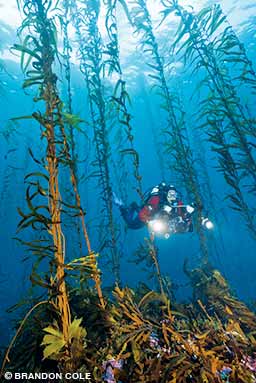
Warming oceans bring a higher risk of infectious outbreaks in general, noted Drew Harvell, a biology professor at Cornell University. The sea star disease affected about 20 different species, but sunflower sea stars died quickest and in the highest numbers. National Oceanic and Atmospheric Administration (NOAA) data show that from 2013 to 2015 these sea stars completely disappeared off the California and Oregon coasts and declined by 99 percent near Washington. In almost 700 trawls in 2016, NOAA researchers could not find a single sunflower sea star. The International Union for Conservation of Nature (IUCN) added the species to its Red List as critically endangered in December 2020.
“These sea stars were as common as robins,” Harvell said. “On a dive, you would always see sunflower stars. It’s fair to say we have no idea where the disease came from, since we’re not even sure what pathogen is responsible.” She added that it’s likely a new pathogen since more than 20 species were affected so catastrophically.
Measuring up to 3.3 feet (1 meter) in diameter and with 15 to 24 arms, sunflower sea stars are keystone predators. Their rapid, widespread decline and the subsequent kelp loss have serious ecosystem-level consequences. Healthy kelp forest ecosystems are more productive than the Amazon rainforest and provide breeding grounds for more than 1,000 species.
Restoring Bull Kelp
Scientists say bull kelp is extremely unlikely to recover without help, so restoration efforts are underway all along the West Coast. Dealing with the urchins is a critical first step.
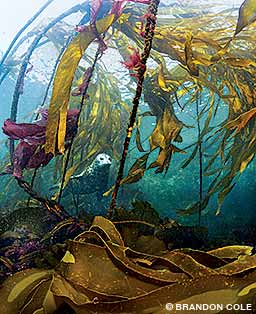
Several projects are using commercial fishers and volunteers to remove or destroy the urchins. At specific locations along California’s coast, any diver with a valid fishing license can remove unlimited amounts of red and purple urchins. Reef Check, the Giant Giant Kelp Restoration Project and other organizations are working to expand areas that allow this process. In Noyo Harbor, where commercial fishers are paid to clear urchins from a 10-acre restoration site, the density has been reduced to one per square meter, but that doesn’t seem to be low enough for kelp recovery, said Dan Abbott, Reef Check’s Central California Regional Manager.
People involved with these projects stress that the idea is not to remove all urchins, even if that were possible. “It would be better to find a way to bring balance back to nature,” Harvell said. “Urchins are not an invasive species. We normally think of them as a healthy part of the ecosystem.”
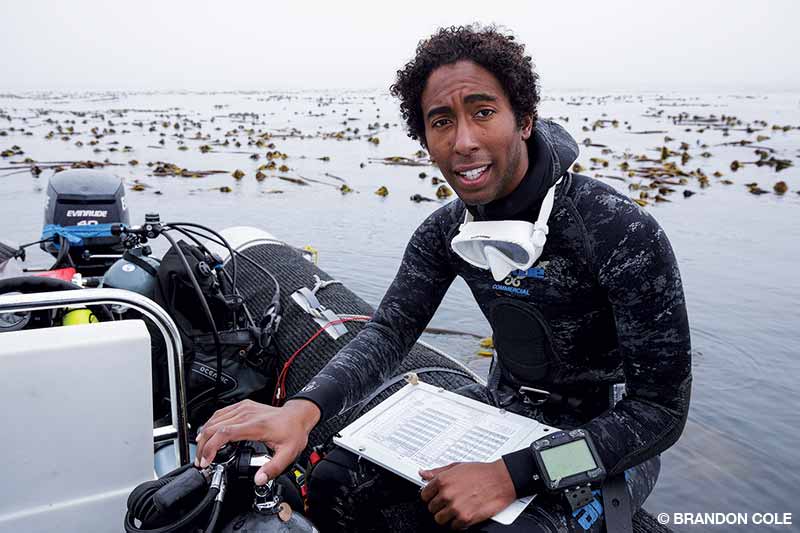
Another key to restoration is a source of kelp spores. Reef Check’s three restoration sites in Mendocino County, California, have stands of bull kelp nearby. TNC is developing a spore bank that could help restore kelp forests and is evaluating cultivation and wild planting methods.
The final step is to bring back sea stars.
The University of Washington’s Friday Harbor Laboratories, with support from TNC, has produced a small number of sunflower stars in captivity. The researchers cannot release the sea stars until conditions change, Harvell said, but successful breeding is an important step.
Scientists are also gearing up new studies on the cause of wasting disease and resistance to it. “The sunflower star does not have resistance, but other species are doing great,” Harvell said. “We want to know what it is about their immune systems that allows them to prevail.”
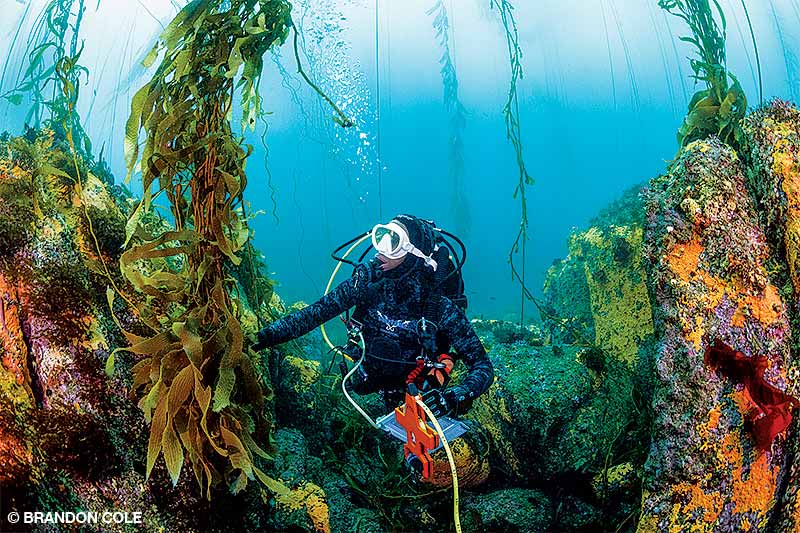
The situation calls for an all-hands-on-deck approach, Rogers-Bennett said. “We need creative solutions for dealing with urchins and reseeding efforts. We need work on kelp genetics, the health of the spore bank and whether we even still have one.”
Lessons learned from restoration efforts in the United States could help with kelp loss happening in Australia, Norway, Chile and elsewhere around the world.
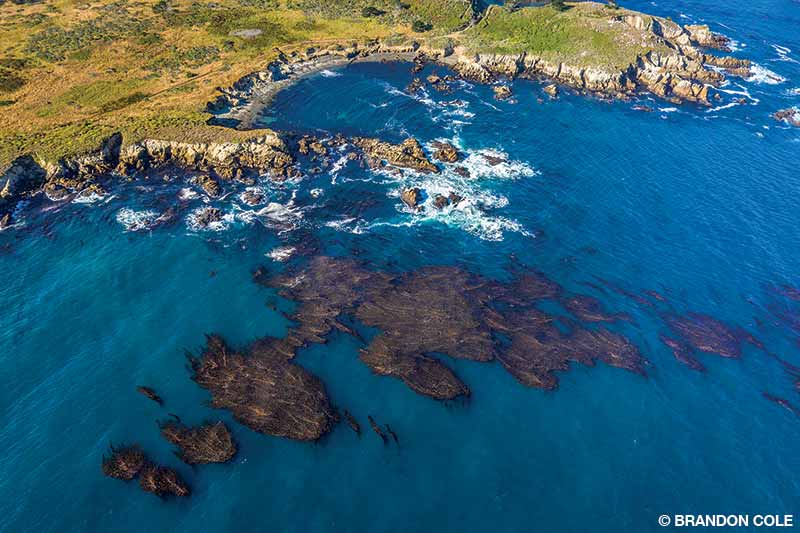
Divers can help by volunteering with projects that remove urchins or monitor restoration sites. Individuals can support efforts to reduce carbon emissions and become educated about their carbon footprint.
“Divers are uniquely positioned to know what’s going on with kelp,” Rogers-Bennett said. “Many people look out over the water and don’t realize an entire kelp forest is missing under the surface. We can communicate this story to those who don’t dive.”
For more information, visit Reef Check at reefcheck.org/california-program and the Giant Giant Kelp Restoration Project at g2kr.com. To sign a petition to allow more urchin removals, go to g2kr.com/urchin-removal-petition.
Explore More
Learn more about the Giant Giant Kelp Restoration Project and the critically endangered sunflower sea stars in these videos.
© Alert Diver — Q2 2021